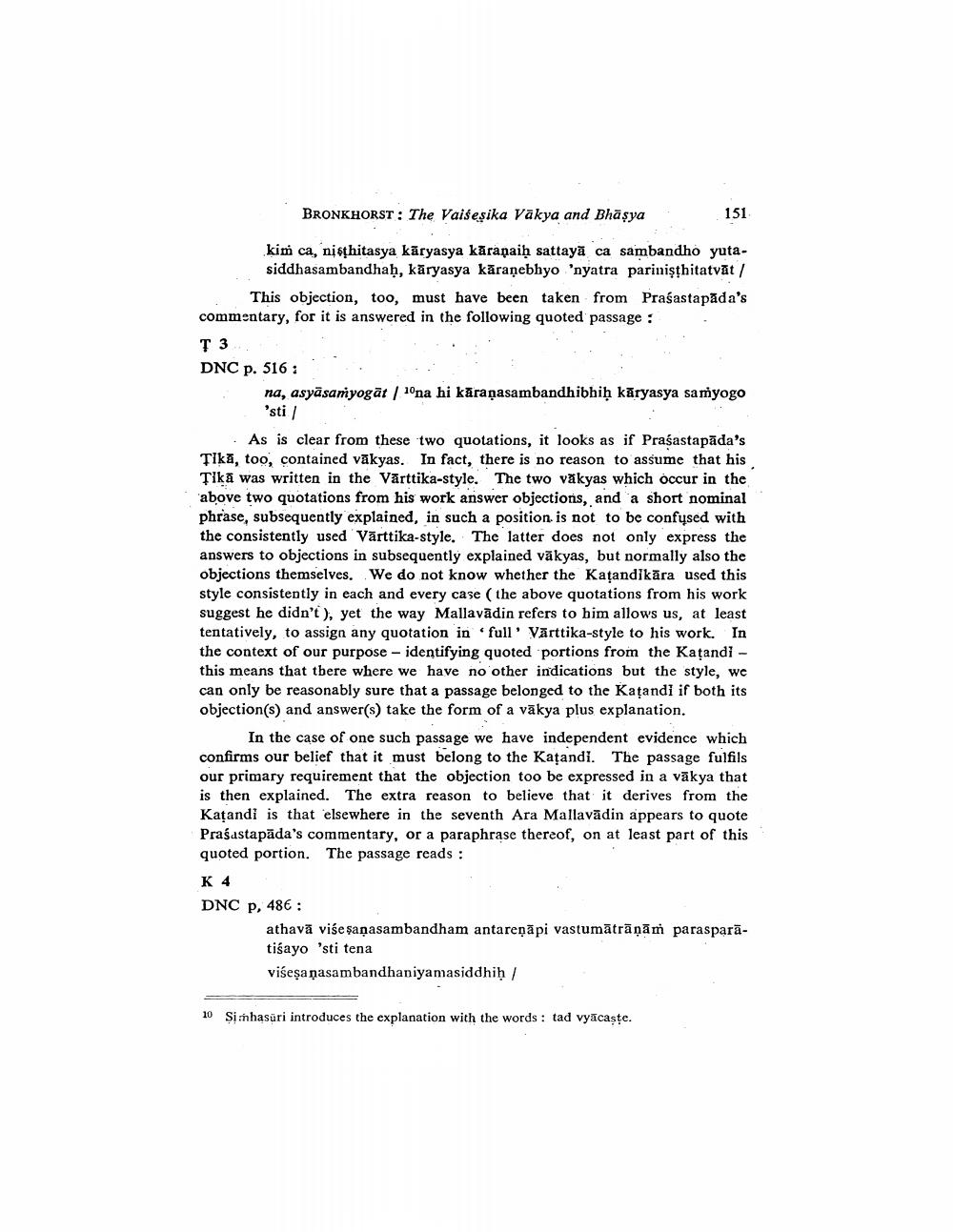________________
BRONKHORST: The Vaiseṣika Vakya and Bhāṣya
kim ca, nisthitasya karyasya kārapaiḥ sattaya ca sambandho yutasiddhasambandhaḥ, kāryasya kāraṇebhyo 'nyatra pariniṣṭhitatvāt / This objection, too, must have been taken from Prasastapāda's commentary, for it is answered in the following quoted passage:
T 3
DNC p. 516:
151
na, asyasamyogāt / 10na hi kāraṇasambandhibhiḥ karyasya samyogo 'sti /
As is clear from these two quotations, it looks as if Prasastapāda's Tika, too, contained vakyas. In fact, there is no reason to assume that his Tika was written in the Varttika-style. The two vakyas which occur in the above two quotations from his work answer objections, and a short nominal phrase, subsequently explained, in such a position is not to be confused with the consistently used Varttika-style. The latter does not only express the answers to objections in subsequently explained vakyas, but normally also the objections themselves. We do not know whether the Kaṭandikara used this style consistently in each and every case (the above quotations from his work suggest he didn't), yet the way Mallavadin refers to him allows us, at least tentatively, to assign any quotation in full' Värttika-style to his work. In the context of our purpose - identifying quoted portions from the Kaṭandi - this means that there where we have no other indications but the style, we can only be reasonably sure that a passage belonged to the Katandi if both its objection(s) and answer(s) take the form of a vakya plus explanation.
In the case of one such passage we have independent evidence which confirms our belief that it must belong to the Katandi. The passage fulfils our primary requirement that the objection too be expressed in a vakya that is then explained. The extra reason to believe that it derives from the Kațandi is that elsewhere in the seventh Ara Mallavādin appears to quote Prasastapāda's commentary, or a paraphrase thereof, on at least part of this quoted portion. The passage reads:
K 4
DNC p, 486:
athavā vise ṣaṇasambandham antareṇāpi vastumātrāṇām parasparātiśayo 'sti tena
viseṣaṇasambandhaniyamasiddhiḥ /
10 Simhasüri introduces the explanation with the words: tad vyacaṣṭe.




